How to Make Durian Puree? 8 Easy Steps!
Creating durian puree involves a straightforward process that begins with the selection of ripe durians, known for their distinct taste and creamy texture.
The steps include preparing the durian by opening it, removing the seeds, and pureeing the flesh to a smooth consistency. It’s a simple way to enjoy the rich flavor of durian in various recipes.
Here are some quick steps:
Example: Durian puree can be used in pastries, such as cakes or crepes, to provide a unique flavor.
Durian puree adds a luxurious and tropical twist to desserts and savory dishes alike.
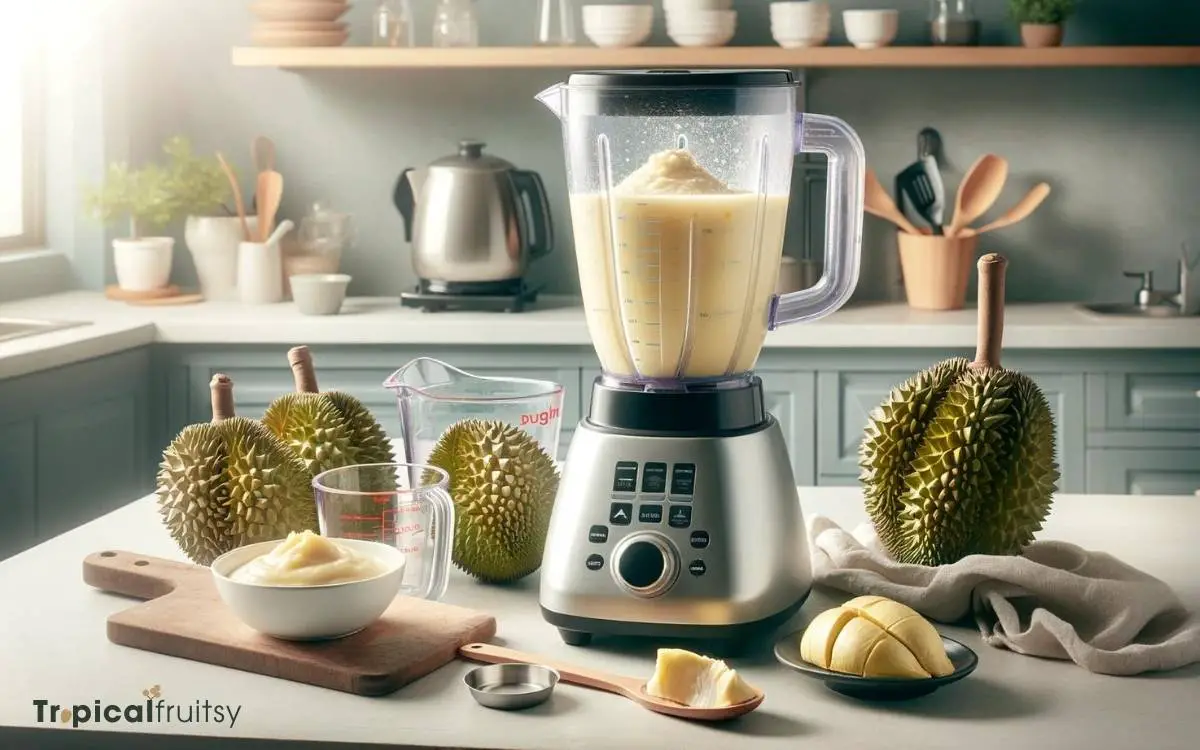
Key Takeaway
Step 1: Selecting the Perfect Durian

Choosing the right durian is essential for a high-quality puree. The fruit’s ripeness and variety directly impact the flavor and texture of the final product.
Professionals look for a firm stem, a slight give upon gentle pressure, and a rich, aromatic scent indicative of maturity when selecting durian.
The color of the spikes can also provide clues to its readiness, with a gradual shift from green to brown hues suggesting optimal ripeness.
Connoisseurs may also consider the specific cultivar, as each offers a unique balance of sweetness and bitterness, contributing to the puree’s complexity.
A meticulous approach to selection ensures the durian puree will embody a robust depth of flavor, creamy consistency, and an unrivaled sensory experience.
Step 2: Preparing Your Work Area
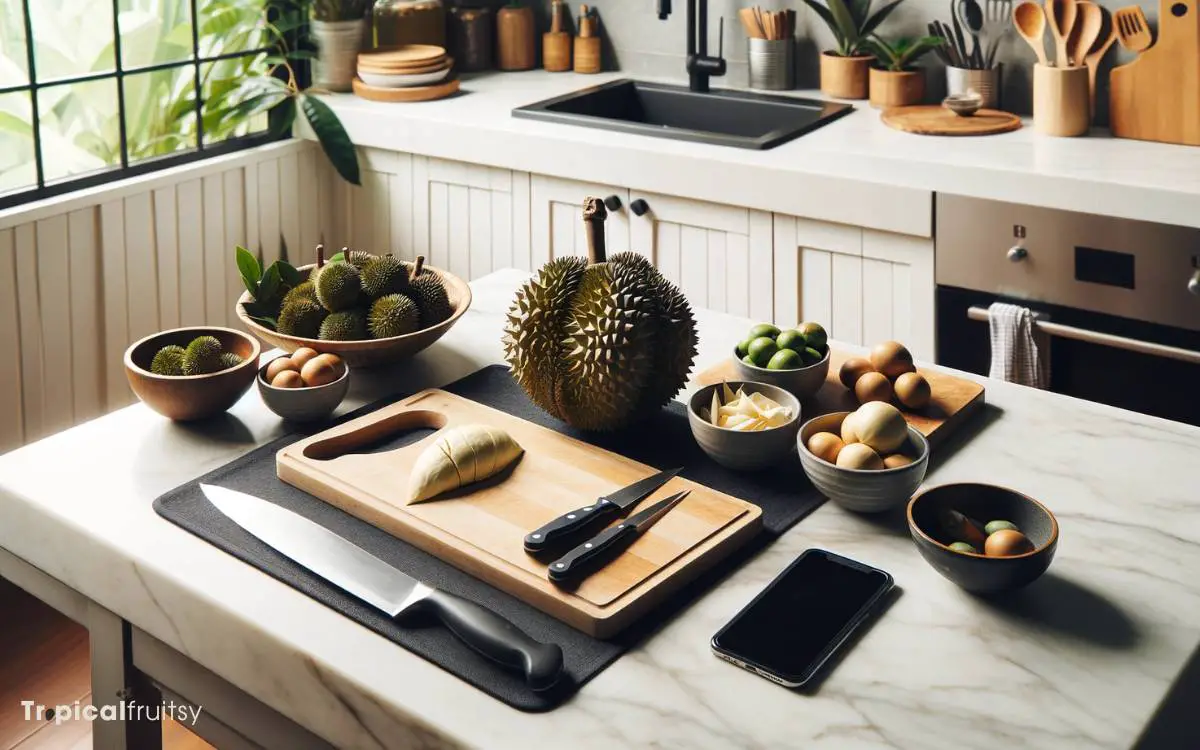
Before commencing the puree process, it is imperative to ensure that your workspace is pristine. A clean surface mitigates the risk of contamination and sets the stage for a hygienic preparation of durian puree.
Equally important is the assembly of all necessary tools, which streamlines the process and contributes to a more efficient puree-making experience.
Clean Surface Thoroughly
A sanitized workspace is essential to safely prepare durian puree, ensuring that all surfaces and utensils are thoroughly cleaned to prevent contamination.
Begin by meticulously washing countertops, cutting boards, and knives with hot, soapy water. Rinse them with clean water to remove any soap residue.
Next, apply a disinfectant, either a commercial food-safe sanitizer or a solution of one tablespoon of unscented, liquid chlorine bleach per gallon of water.
Allow the surfaces to air-dry after sanitizing, as this enhances the effectiveness of the germ-killing process.
Additionally, it’s important to wash your hands with antibacterial soap for at least 20 seconds before and after handling durian.
Such rigorous hygiene practices safeguard the quality of your durian puree and ensure a healthful culinary experience.
Gather Necessary Tools
Having sanitized the workspace, one must now gather the appropriate tools, including a sharp knife, a cutting board, a spoon, and a blender or food processor, to efficiently create durian puree.
The knife should be of high quality, capable of penetrating the durian’s tough exterior with precision. Opt for a cutting board that is sturdy and resistant to deep scoring, which could harbor bacteria.
The spoon will be instrumental in scooping out the flesh, so ensure it has a firm handle and a sufficient bowl size. A blender or food processor with robust blades is essential to achieve a smooth consistency in the puree.
With all tools at hand, you are now poised to commence the process of cutting and opening the durian.
Step 3: Cutting and Opening Durian
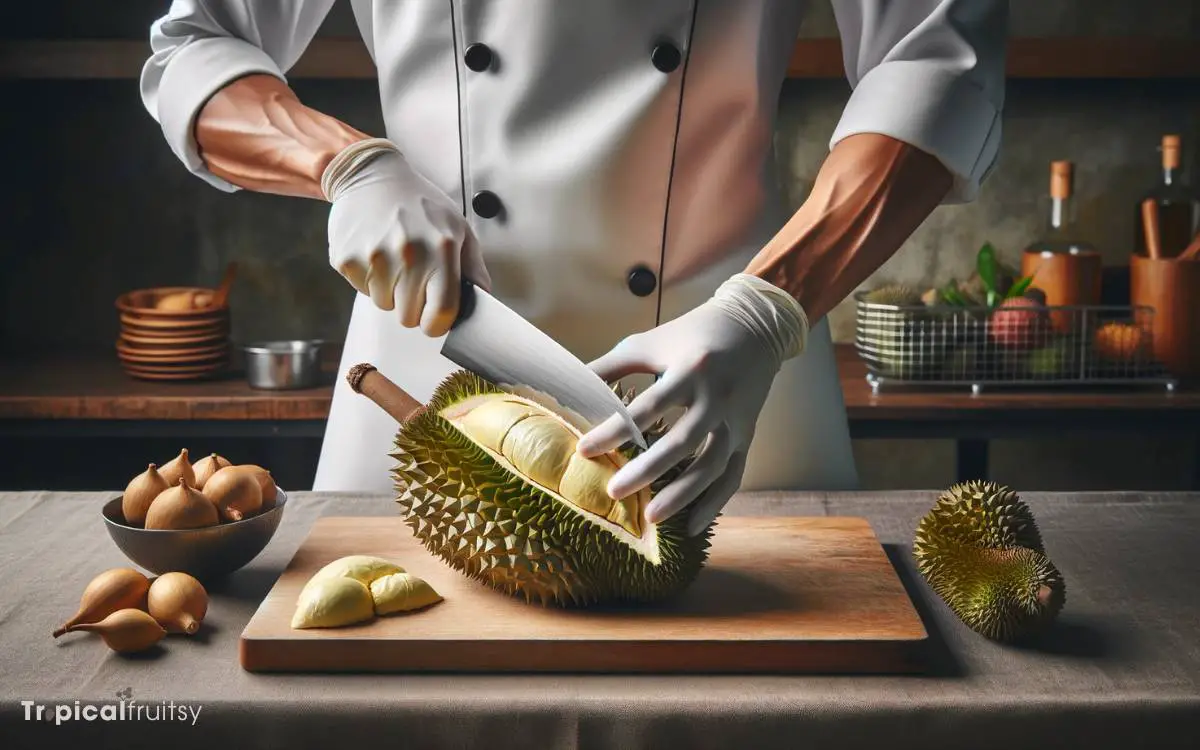
Transitioning from workspace preparation to the art of durian dissection requires meticulous attention to detail.
The initial step involves discerning the maturity of the durian, as ripeness is paramount for optimal flavor and texture in the puree.
Subsequently, mastering safe slicing techniques is crucial to not only safeguard the handler but also to preserve the integrity of the fruit’s flesh for a smooth puree.
Identify Ripe Fruit
Selecting a ripe durian is essential for creating a flavorful puree, with the fruit’s exterior giving subtle hints about the readiness of its interior. To ensure optimal ripeness, examine the durian for a firm yet slightly yielding shell, indicative of maturity.
A ripe durian will emanate a distinct, strong aroma that can be noticeable even through its husk—a telltale sign for connoisseurs of its readiness for consumption. The stem should appear dry and the spikes should start to spread slightly apart.
When lightly shaken, a mature durian may emit a soft, dull sound, suggesting the seeds inside have begun to loosen, a stage ideal for puree preparation.
These sensory evaluations, combined with visual cues, will guide you in selecting a durian at its peak.
Safe Slicing Techniques
Once one has identified a ripe durian, employing safe slicing techniques is crucial to avoid injury and preserve the fruit’s integrity for pureeing.
Durian’s formidable husk and sharp spikes require careful handling. It is advisable to use thick gloves or a towel to protect your hands.
Locate the seams on the durian’s shell, as these natural lines are the weakest points where cutting should commence.
Use a sharp, sturdy knife to make an initial incision along the seam. Gently pry the shell apart with your hands or use the knife to leverage it open, revealing the custard-like flesh inside.
Step 4: Removing Durian Flesh
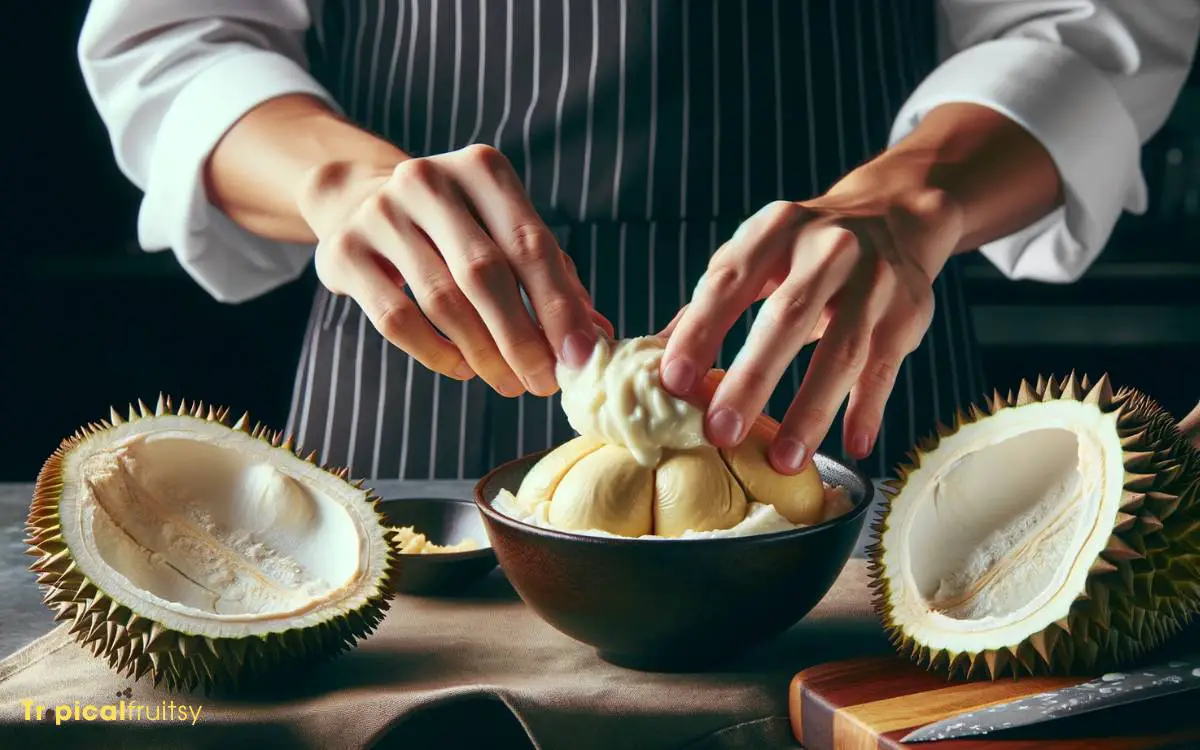
Before extracting the flesh from a durian, ensure that you have a clean, flat surface and appropriate tools, such as a sharp knife and gloves, to handle the fruit’s spiky exterior safely.
The process of removing the flesh is both meticulous and rewarding, as it is the heart of durian puree creation.
To assist in this task, consider the following steps:
- Wear gloves: Protect your hands from the durian’s sharp spikes.
- Locate seams: Identify the natural lines along the durian’s shell.
- Cut carefully: Use the knife to make incisions along the seams.
- Pry open: Gently pull apart the shell to expose the flesh.
- Scoop flesh: Remove the creamy flesh, avoiding any large seeds.
Employ these methods with precision to ensure the purity and quality of your durian puree.
Step 5: Pureeing the Fruit
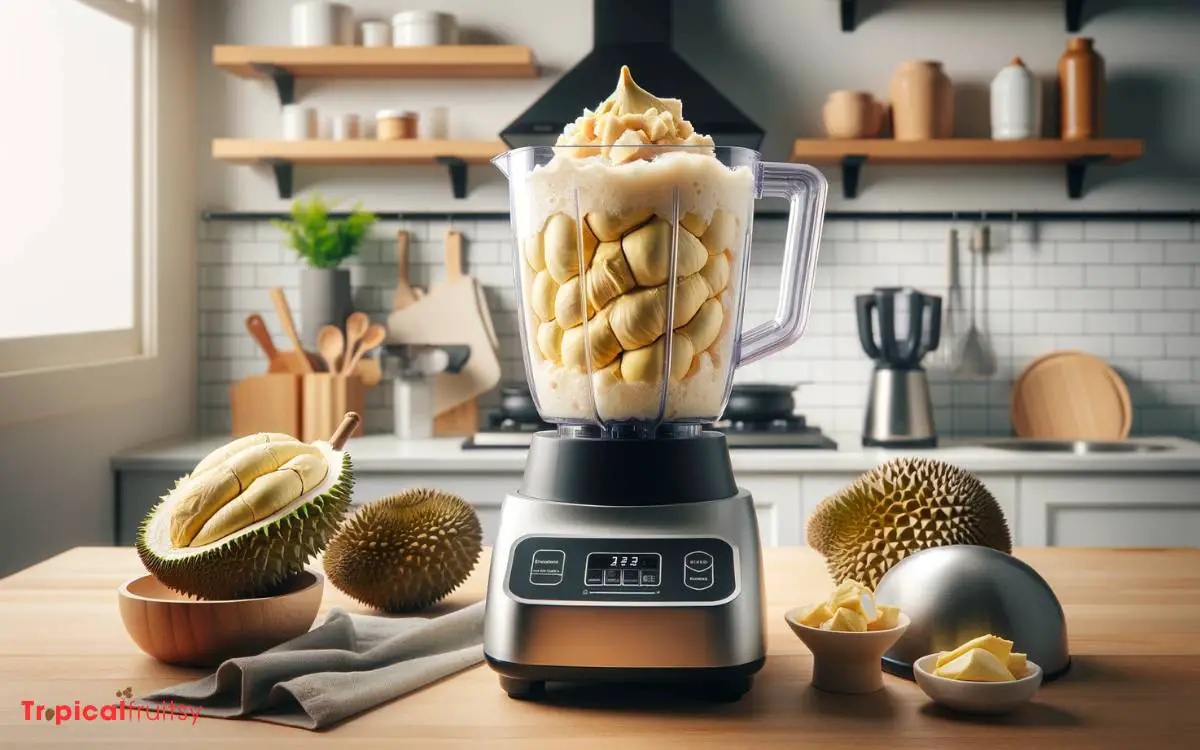
Having removed the durian flesh, the next step is to transform it into a smooth puree using a food processor or blender.
This process requires meticulous attention to achieve the desired consistency while preserving the fruit’s distinctive flavor profile.
Begin by placing the durian flesh into your chosen appliance. Pulse at a moderate speed, ensuring that the fruit is evenly processed. If necessary, pause intermittently to scrape down the sides, ensuring all pieces are finely pureed.
For a silkier texture, it may be beneficial to add a small amount of liquid—such as water or coconut milk—which can facilitate the blending process without significantly diluting the fruit’s potent taste.
Continue blending until the puree reaches a uniform and creamy consistency, indicative of a high-quality end product.
Step 6: Straining the Puree
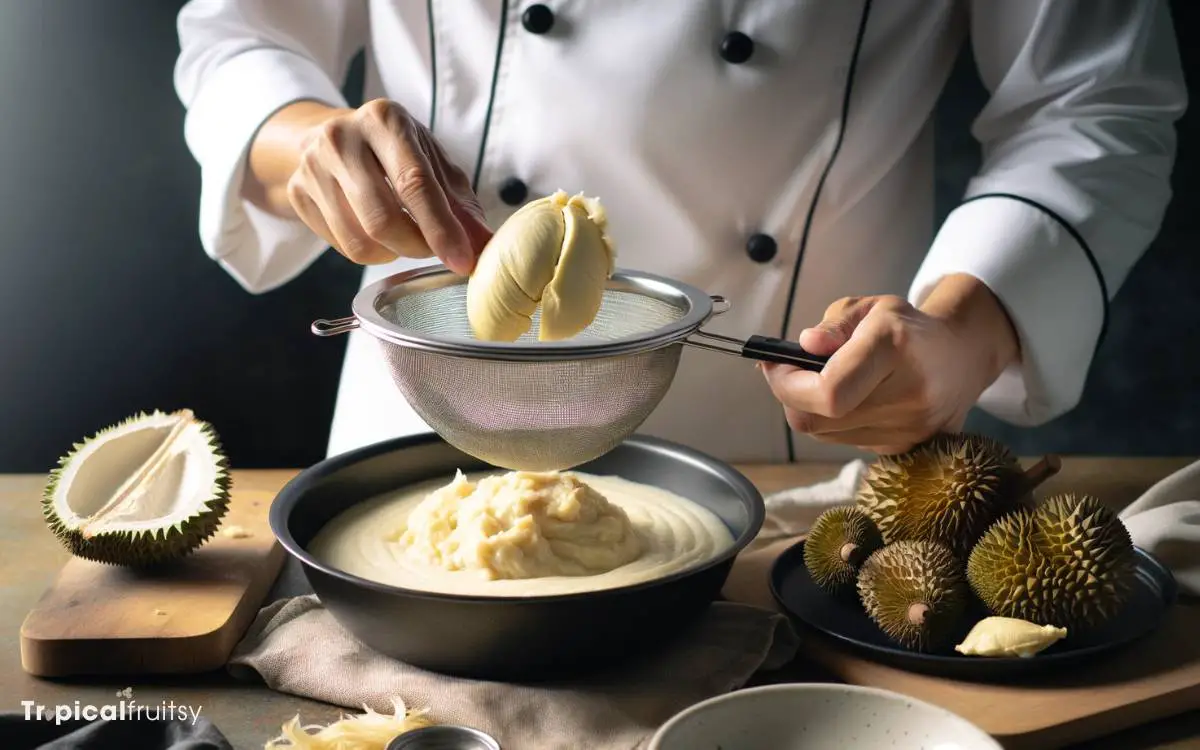
After pureeing the durian flesh, it is advisable to strain the mixture through a fine-mesh sieve to remove any remaining fibers and achieve a smoother texture.
This step is crucial for ensuring that the resulting puree is of the highest quality, free from unwanted particulates that could mar the sensory experience of your culinary creations.
To enhance the straining process, consider these tips:
- Use a rubber spatula to press the puree through the sieve.
- Ensure the sieve is positioned over a bowl with ample space to collect the puree.
- Scrape the underside of the sieve to include all the durian puree.
- If the sieve becomes clogged, gently tap it to move the contents through.
- Discard the fibers left in the sieve after straining is complete.
Step 7: Storing Durian Puree
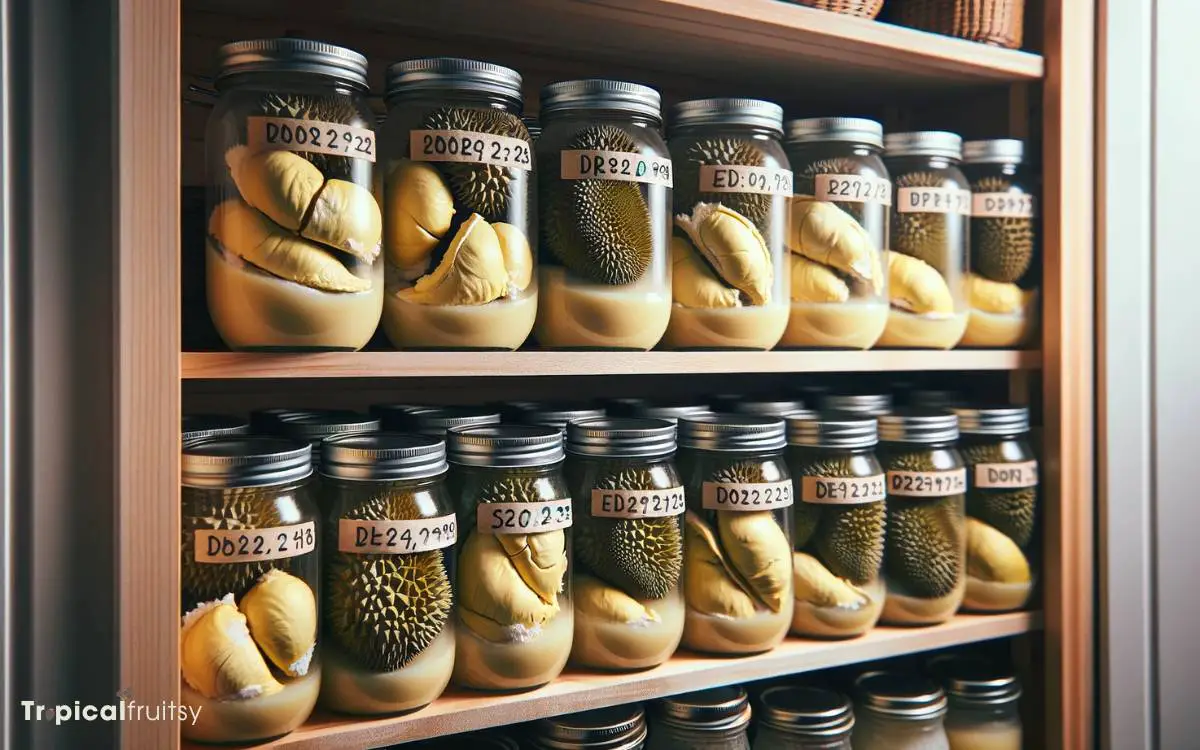
Upon completion of the straining process, properly storing the durian puree is essential to maintain its freshness and flavor.
Ensuring that the puree is stored under optimal conditions will extend its shelf life and preserve its unique taste profile.
The following table provides a concise guide for storing durian puree:
| Storage Method | Container | Shelf Life |
|---|---|---|
| Refrigeration | Airtight | 3-5 days |
| Freezing | Freezer-safe | 1-2 months |
| Canning | Sealed jars | 1 year |
For refrigeration, place the puree in an airtight container to prevent odor contamination. If freezing, use freezer-safe containers and label with the date of storage.
Canning the puree allows for an extended shelf life and requires proper sealing to ensure preservation. Always check for signs of spoilage before use.
Step 8: Using Durian Puree in Recipes
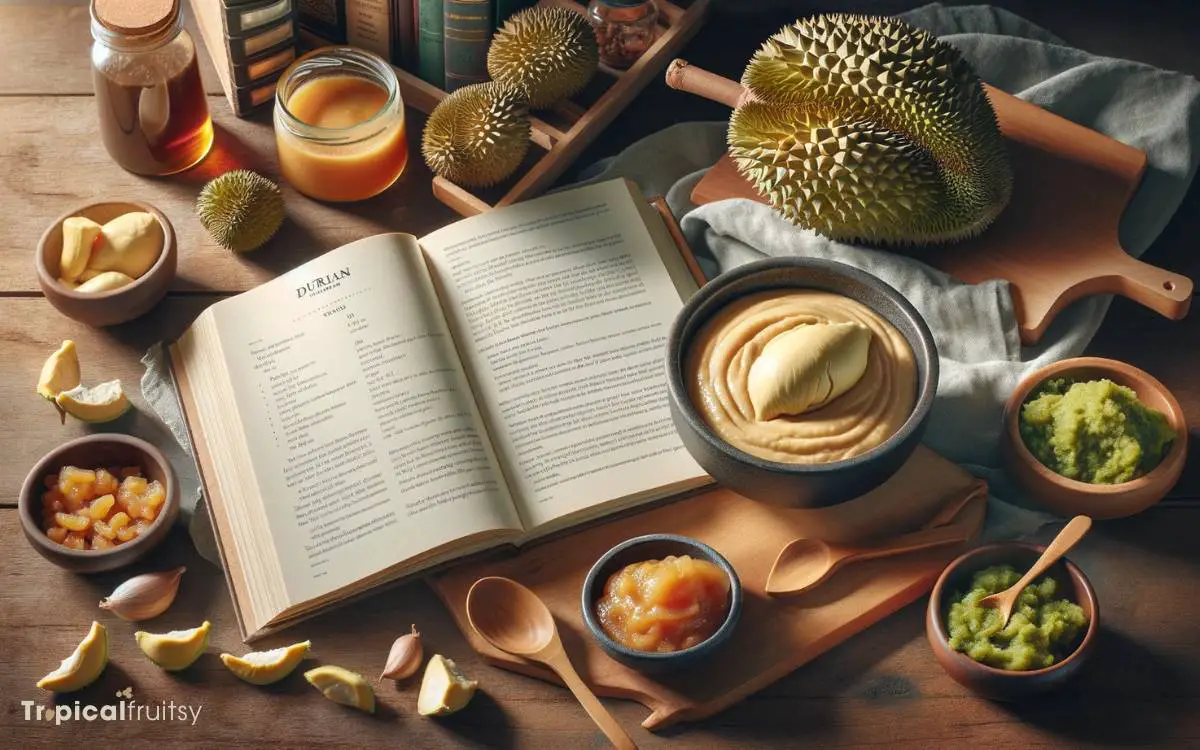
How can you incorporate durian puree into your culinary creations to enhance both flavor and texture?
This pungent and creamy fruit can be used in various recipes, offering a unique taste and creamy consistency that can elevate your dishes.
The versatility of durian puree allows for innovative uses across a spectrum of culinary endeavors.
Here are five ways to use durian puree:
- Exotic Smoothies: Blend with other tropical fruits for a rich, creamy beverage.
- Dessert Fillings: Enhance cakes, pastries, or chocolates with its distinctive flavor.
- Ice Cream Base: Create a custard-like durian ice cream for a bold dessert.
- Sauces and Dips: Combine with coconut milk for a sweet-savory dip or sauce.
- Baked Goods: Incorporate into muffins or pancakes for a twist on breakfast classics.
Employing durian puree in recipes requires an understanding of its potent flavor profile, ensuring it complements rather than overpowers the dish.
Conclusion
The transformation of the formidable durian into a smooth puree juxtaposes nature’s defenses with culinary finesse.
The spiky exterior, once a barrier, yields to careful technique, revealing a luscious treasure coveted in gastronomy.
This delicate process reflects the harmony between respecting the integrity of the fruit and the ingenuity of preparation.
The resulting puree, versatile and aromatic, stands as a testament to the meticulous art of fruit processing.






